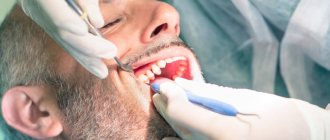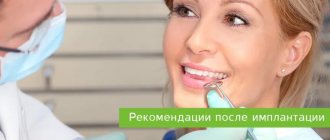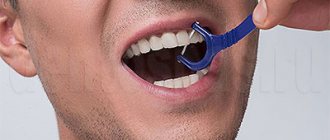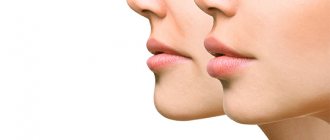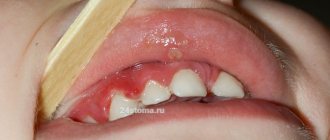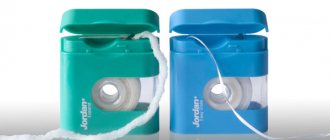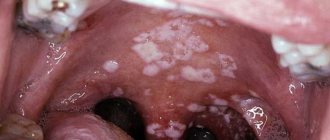Teeth whitening is one of the most popular services in dentistry. A professional procedure allows you to get rid of plaque on your teeth, which is formed as a result of external influences. High-quality whitening is effective even against yellow enamel, which is typical for smokers. After the procedure, the teeth become white. Since not everyone is ready to give up a bad habit, even for the sake of a beautiful smile, dentists are often asked the question: is it possible to smoke after teeth whitening?
How smoking affects teeth
Smoking is harmful to the entire body, including the teeth, which are the first to bear the brunt of tobacco smoke and high temperatures. Under the influence of cigarettes, the enamel begins to deteriorate, microcracks appear on it, through which tobacco smoke substances and bacteria present on the teeth quickly penetrate.
Plaque formation in smokers occurs quickly, and it is difficult to remove it on your own. In addition, tobacco lovers are unlikely to brush their teeth after every cigarette they smoke. As a result, the enamel is destroyed, which leads to tooth decay, and the plaque gradually hardens, forming tartar, which contributes to the development of gum disease.
The longer a person smokes, the more their teeth will suffer. Gradually, negative processes will begin to progress, which will undoubtedly entail serious aesthetic and pathological consequences.
List of prohibited products
In the first two weeks, you need to treat your teeth especially carefully. Hot and cold food is prohibited; everything should be moderately warm. There is no need to expose the enamel to even mild acid, so you will have to exclude fermented milk products.
With a white diet, you eat everything that is light in color. Animal products include:
- white meat and fish,
- egg white,
- soft cheese (mild and without spices),
- fresh milk,
- butter.
The following herbal products are acceptable:
- rice,
- pearl barley,
- cereals,
- white beans,
- potato,
- pasta,
- flour products (only without sugar and coloring ingredients),
- light mushrooms (champignons or porcini),
- light vegetable oil,
- white sweet pepper,
- peeled cucumbers,
- bananas,
- white and clear drinks (non-alcoholic).
The remaining vegetables and fruits are divided into two groups: unacceptable and conditionally acceptable. For example, beets or carrots are prohibited in any form. Conditionally acceptable include those for which heat treatment is sufficient to destroy the acid and weak pigment. For example, boiled cabbage or sour baked apples without peel.
Do not use:
- dairy products;
- egg yolk;
- red fish;
- red meat;
- sausage and ham (contains dyes);
- light fruits (if they are sour and have peel);
- colored fruits and vegetables;
- greenery;
- unpeeled cucumbers;
- sweets;
- spices, sauces, vinegar;
- colored drinks (including coffee, black and even green tea);
- alcohol.
- In the first four days after bleaching, you must strictly follow the rules. From the 5th day you can allow yourself relaxations, but small ones. For example, drink green tea through a straw or fermented baked milk, then immediately brush your teeth or rinse your mouth.
It is advisable to adhere to a white diet for a month, the minimum required period is 14 days. At this time, it is not yet recommended to paint your lips, since accidentally getting gloss or lipstick on the enamel is equivalent to using a coloring product.
Changes in enamel color in smokers
In the process of smoking a cigarette, smoke enters the human body, which contains tar, nicotine and combustion products. They stick tightly to tooth enamel, staining it an unnatural color. Smokers often have yellow or brown teeth. In this case, localized areas of enamel staining in the form of spots or lines may be observed, indicating the most affected areas.
Features of stains on enamel:
- in the spaces between the teeth - a sign of the formation of tartar, which accumulates a greater amount of coloring substances due to its porous structure;
- along the gum line - a sign of recession, characterized by weakening of the gums, exposure of the neck of the teeth and inflammation of the soft tissues;
- the inner side of the dentition - signals an increased acidic environment as a result of the interaction of saliva and cadmium sulfate (a product of burning a cigarette), the formation of tartar and inflammation of the gums.
Long-term smoking leads to the penetration of dyes deep into the tissue of the dental crown. Not only enamel is negatively affected, but also hard tissues up to dentin. Therefore, the only solution to restore a snow-white smile is professional whitening.
Recommendations after brushing your teeth
To maintain the effect for a longer time after carrying out complex measures for professional teeth cleaning, of course, you should strictly follow medical recommendations:
- To prevent the development of hyperesthesia and (increased tooth sensitivity) during the first few days, it is better to use toothpaste for sensitive teeth and be sure to start using a new toothbrush.
- To make the enamel non-traumatic at first, it is better to choose a toothbrush with ultra-soft bristles, which after three months can be replaced with super-soft or soft ones.
- In addition to regular hygiene products, interdental brushes and irrigators will not be superfluous, with the help of which the most inaccessible and interdental areas will remain clean.
- In the first two hours after comprehensive professional cavity hygiene, it is not recommended to eat or drink cold, hot, sour, sweet drinks and foods that can cause short-term pain symptoms characteristic of increased tooth sensitivity.
- Sudden temperature changes (for example, if you combine hot food with cold drinks or smoke outside in winter) subsequently cause microcracks in tooth enamel.
- Special antimicrobial and antiseptic gels and rinses prescribed by the doctor will help stop possible gum bleeding and temporary discomfort.
- Over the next 12 hours, you should exclude any coloring foods from your diet (tea, coffee, red wine, berries, mustard, ketchup, soy sauce, candy, etc.) and stop smoking.
- No earlier than a day later, it is advisable to start taking hard, raw, non-acidic fruits and vegetables (apples, carrots), which mechanically cleanse tooth enamel, and also perfectly massage the gums and stimulate normal blood circulation.
- Professional oral hygiene is especially recommended after therapeutic and orthopedic treatment.
For the convenience of our patients, the clinic offers a range of preventive and specialized personal hygiene products for the oral cavity, intended for use after surgical and orthopedic procedures: toothpastes and rinses containing chlorhexidine, gels for gums, toothbrushes of different hardness, interdental brushes and holders for them, irrigators, preparations for plaque indication.
In our dentistry in Moscow, we use safe and gentle methods and professional oral hygiene products at reasonable prices and offer attractive promotions for comprehensive oral care.
You can make an appointment at Apex-D Dentistry by calling the administrator at +7 and +7, or filling out an electronic form (the administrator will contact you at the specified phone number and agree on the date and time of the appointment).
Professional whitening
Many smokers resort to home whitening methods. However, even specialized means for lightening tooth enamel are not able to rid tooth enamel of ingrained dye.
Professional whitening, thanks to specially developed technology, helps make tooth enamel lighter by 3, 5 and even 10 shades, depending on the technique used.
The most effective methods are:
- air flow;
- Zoom;
- laser;
- ultraviolet.
As a rule, smokers need several procedures to completely remove the dyes that have become embedded in their teeth. The effect may exceed all expectations.
Dentists' recommendations
Recommendations regarding hygiene:
- Don't skip daily teeth brushing. Cleansing twice a day for 3-5 minutes is the law for those who monitor the health of their smile.
- Use a brush with soft bristles and a toothpaste with fluoride and calcium.
- Clean the interdental spaces with a special floss.
- Rinse your mouth several times a day, especially after meals. You can use special antiseptics, but only without dyes.
- Have a professional cleaning at the dentist twice a year to remove stubborn plaque and at the same time check the condition of your teeth.
General recommendations: avoid food dyes, don't smoke, eat right and take vitamins.
When planning to do teeth whitening, you need to be prepared not only to change your diet, but also to some extent to change your lifestyle, so as not to “break down” at first. For example, you can’t drink black coffee, which means you need to adjust your sleep patterns. You can’t smoke, which means the smoker should avoid stressful situations. In addition, at the planning stage, you need to carefully choose a specialist and a clinic for the procedure, because dental health should be trusted only to professionals.
What happens if you continue to smoke after teeth whitening?
Gentle methods of teeth whitening for people who have the habit of smoking will not be effective, so dentists recommend using modern hardware techniques, such as Zoom or professional laser cleaning.
After professional whitening, tooth enamel will be somewhat thinned, the protective layer will weaken, and tooth sensitivity may increase. Such consequences are natural, given that the teeth were exposed to external influence. However, after a few days the condition of the tooth enamel will be restored. To strengthen it, you can additionally do fluoridation or remineralization.
After teeth whitening, you can smoke, but you should understand that all the substances of tobacco smoke will instantly penetrate the unprotected tissues of the teeth and cause damage to them, which will be difficult to eliminate. The aesthetic effect will be reduced to nothing. Immediately after bleaching, 2-3 cigarettes will be enough for the enamel to reacquire a pronounced yellow-brown tint.
Many patients believe that hookah can be smoked after teeth whitening, because it is not cigarettes. But this is not true at all. For hookah, tobacco is also used, which also contains chemical components and tobacco leaves. The smoke that is inhaled through the pipe will contain combustion products and the same resins that stain tooth enamel. For this reason, dentists definitely do not recommend hookah after teeth whitening.
After cleaning dentures
In cases where the patient already has orthopedic structures installed, professional teeth cleaning is recommended at intervals of 3-4 months.
This depends on how carefully, correctly and regularly individual hygiene is carried out in the presence of artificial crowns, bridges and other types of prostheses, which determines the degree of healthy condition of one’s own teeth in contact with existing orthopedic structures.
Particular attention should be paid to the areas of contact between the prosthesis and the gingival margin. The appearance of a defect in the contact area makes it difficult to clean it and contributes to the intensive accumulation of plaque and food debris under the denture.
Special cases of using bleaching agents
In patients with metabolic disorders and a tendency to bad habits, there is a need to use special means. When smoking after bleaching, pathological changes occur much faster. The culprit is a combination of an existing disease and a craving for cigarettes. As soon as 2 problems combine forces, irreparable damage is caused to health.
That is why dentists and therapists urge people to be more attentive to their own health. It is impossible to quickly quit a cigarette, so after smoking it is imperative to adhere to the following procedure:
- rinse the mouth with boiled water;
- brush your teeth thoroughly - use a product prescribed by the dentist based on the results of the examination;
- rinse the mouth with a hygienic solution - it is recommended to use liquids based on fluoride or forest herbs;
- treat teeth with dental floss - the duration of this procedure is from 4 to 6 minutes.
Smoking after dental implantation
Dental implantation is one of the most common prosthetic methods, which allows you to achieve an ideal aesthetic and functional result. There are many reasons why you should give up a bad habit during the procedure and recovery:
- slowing down the rate of healing of wound surfaces after implant installation;
- slower engraftment of the implant in the bone tissue, as well as an increased risk of rejection;
- increased risk of infection and development of pain syndrome;
- negative impact on the appearance and functional properties of the crown after installation.
Smoking harms not only natural teeth, but also artificial crowns, gradually affecting their color. A bad habit causes the structure to serve less than it should. You have to change crowns more often, which are not cheap.
How do wounds in the mouths of smokers heal?
The effects of smoking on your teeth and mouth go beyond poor appearance and unpleasant symptoms.
Unfortunately, tobacco smoke also aggravates other oral diseases that are not directly related to it. Any wound surfaces in the mouth take much longer to heal in smokers. The reason lies in the fact that normal regeneration requires a good blood supply. Only competent recommendations from an experienced dentist will help avoid a number of complications associated with this. In advanced cases, there is a high risk of infection and the development of chronic inflammation.
Smoking after tooth extraction
Modern dentistry offers effective and painless methods of tooth extraction. Patients do not experience any discomfort during the procedure, but they are still worried and cannot resist smoking a cigarette after the treatment is completed.
However, dentists believe that smoking and dental health are incompatible things.
Cigarettes after removing affected teeth, especially if we are talking about wisdom teeth, can cause complications. In addition, tobacco smoke has an irritating effect on the wound surface, causing pain and aggravating inflammation. Smokers are advised to abstain from the habit at least in the first day after removal, and better yet, until complete healing.
What not to eat after a professional teeth reading
In the first 2-3 days after the hygiene procedure, you should completely exclude from your diet foods that irritate your teeth - everything sour, salty, sweet, cold, hot, carbonated drinks, as well as foods containing dyes:
- black and brown dyes are found in tea, coffee, Coca-Cola, Pepsi, cocoa, chocolate, soy sauce and balsamic vinegar, as well as in some berries (blueberries,
- blackberries, blueberries, black currants and black grapes);
- yellow dye is inherent in spices - mustard and curry;
- red and orange colors - red wine, ketchup, all red berries, tomatoes and their juice, beets, carrots, pumpkin and red cabbage;
- as well as all products with non-natural dyes - any carbonated drinks, candies, ice cream.
If it is not possible to give up your coffee addiction, then you can start drinking it after a few hours, but you should dilute it generously with milk and drink it through a straw.
What can you eat after a professional teeth reading?
You can start eating almost immediately after professional cleaning. But doctors still advise waiting at least 1 hour.
If fluoridation of the dental surface has been carried out, then it is necessary to abstain from food for at least 2 hours.
Anything that does not contain food or natural dyes is allowed to be used in food. Dentists especially recommend eating more solid foods - fruits and vegetables, such as apples, as they reduce the risk of plaque forming on the surface of the teeth.
It is recommended to increase the amount of calcium-rich foods in your diet - milk, cottage cheese, kefir. But after using soft food, it is imperative to brush your teeth, rinse your mouth and use dental floss, since such food will actively clog into hard-to-reach places.
Also, to maintain the effect of brushing your teeth in the first days, it is recommended to drink mainly water, very lightly brewed tea or apple juice, but diluted with water.
Is it possible to smoke a hookah after a tooth has been pulled out?
Smoking a hookah, which involves inhaling the combustion products of tobacco, causes the same harm as smoking cigarettes. In addition to nicotine, the inhaled mixture contains glycerin impurities. This substance dries out the oral mucosa and has an even more detrimental effect on the wound.
Manufacturers of hookah tobacco often claim the absence of resins in their products. But this fact does not make it less dangerous for humans - the remaining components of hookah tobacco still have a harmful effect on the oral mucosa.
